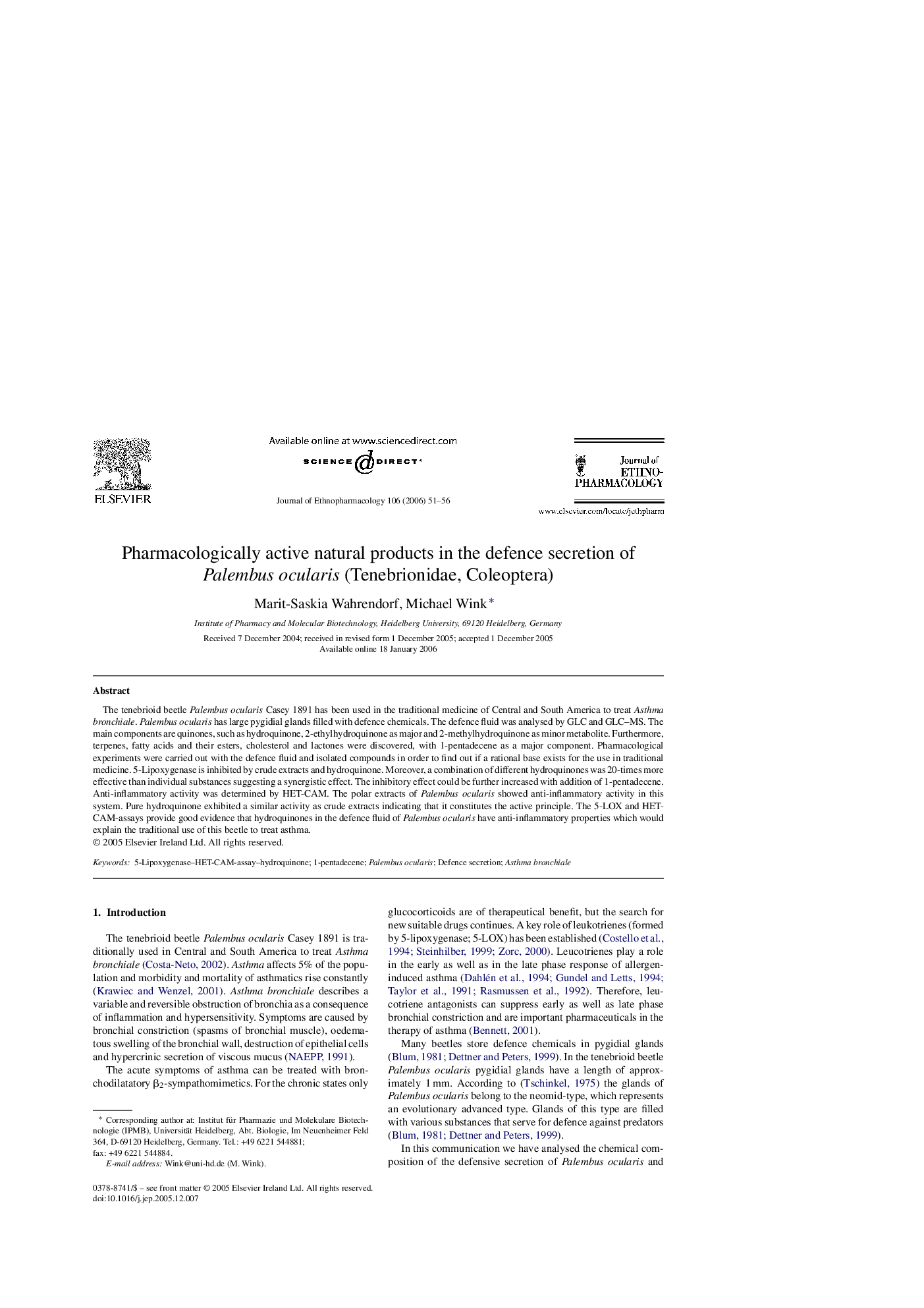| Article ID | Journal | Published Year | Pages | File Type |
|---|---|---|---|---|
| 2548582 | Journal of Ethnopharmacology | 2006 | 6 Pages |
The tenebrioid beetle Palembus ocularis Casey 1891 has been used in the traditional medicine of Central and South America to treat Asthma bronchiale. Palembus ocularis has large pygidial glands filled with defence chemicals. The defence fluid was analysed by GLC and GLC–MS. The main components are quinones, such as hydroquinone, 2-ethylhydroquinone as major and 2-methylhydroquinone as minor metabolite. Furthermore, terpenes, fatty acids and their esters, cholesterol and lactones were discovered, with 1-pentadecene as a major component. Pharmacological experiments were carried out with the defence fluid and isolated compounds in order to find out if a rational base exists for the use in traditional medicine. 5-Lipoxygenase is inhibited by crude extracts and hydroquinone. Moreover, a combination of different hydroquinones was 20-times more effective than individual substances suggesting a synergistic effect. The inhibitory effect could be further increased with addition of 1-pentadecene. Anti-inflammatory activity was determined by HET-CAM. The polar extracts of Palembus ocularis showed anti-inflammatory activity in this system. Pure hydroquinone exhibited a similar activity as crude extracts indicating that it constitutes the active principle. The 5-LOX and HET-CAM-assays provide good evidence that hydroquinones in the defence fluid of Palembus ocularis have anti-inflammatory properties which would explain the traditional use of this beetle to treat asthma.
